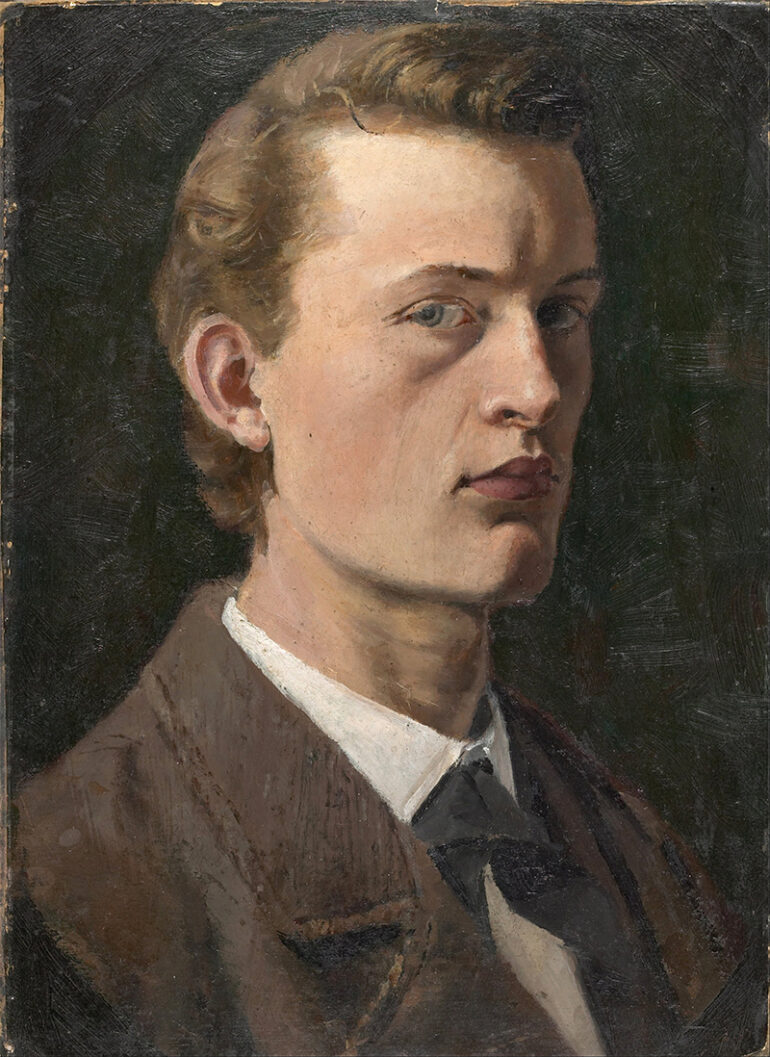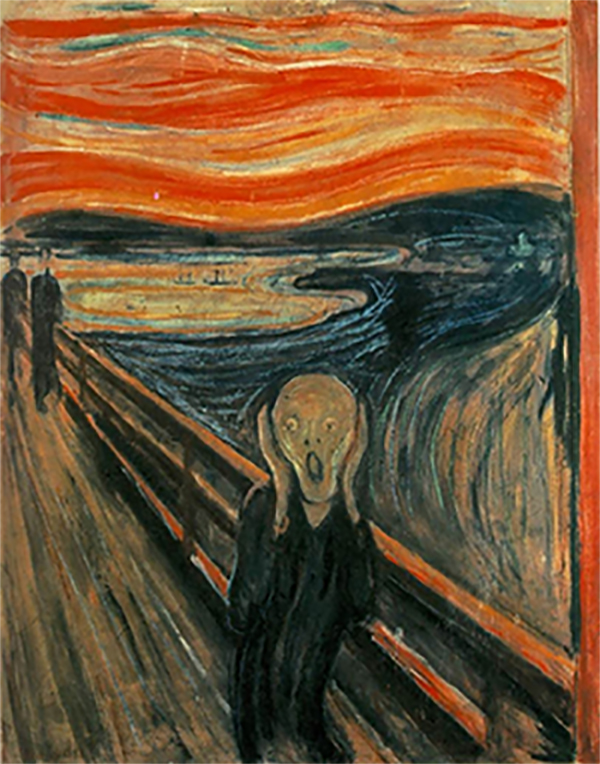“For as long as I can remember, I have suffered from a deep feeling of anxiety which I have tried to express in my art. Without this anxiety and illness I would have been like a ship without a rudder.” – Edvard Munch
The painting is an expressionistic creation based on Munch’s real-life experience of a sudden panic attack while out for a stroll after his two friends, who can be seen in the background, had abandoned him.
A Self Portrait
The Scream represents Munch’s struggle with mental illness and trauma and his endeavor to express it through art. He later entered a psychiatric institution, where he claimed to hear voices.
His severe mental health problems pave a long way back to his upbringing and the ongoing abuse and stress he faced in his professional life. Before his panic attack, one of his sisters was institutionalized in a psychiatric hospital. Furthermore, he lost his mother when he was five and one of his sisters when he was about thirteen. Munch’s father was verbally abusive, and he often used Munch’s late mother to justify his behavior.
However, based on his insights and journal, his illness became the compass on which he pursued art. Painting became his most effective medium to express his strong emotions and innermost thoughts. After meeting Gauguin in Paris in 1908, Munch had a deep understanding and empathy for Van Gogh and his struggles with mental illness.
A Modern Classic Art Style
The Scream was a pivotal piece for the Symbolists of the 1900s and significantly influenced the Expressionists of the early 20th century. During his career, Munch painted in a symbolic Expressionist manner. His subjects were always the same life, love, and death. This transition towards Expressionism marked a departure from realistic, objective images toward a focus on the artist’s emotional response to a work of art. It aims not to reflect external reality but rather the internal reactions that the artist has to external stimuli.
The Scream demonstrates a new art method with its vivid and surreal colors. The anguish is reflected in the whirling lines and bright colors he uses, particularly the warm orange and red tones. Munch used undulating lines that pushed in on the figure like shock waves, simplifying the expression on its face to its most elemental form. He emphasized the point by demonstrating that his two friends had suffered no injuries, suggesting that the ordeal had been internal rather than external. Instead of being just decorative, Munch’s use of line served as a means of conveying significant insights into the human psyche.
Sold at Auction
Following his death, Munch left his surviving works to Oslo, where they now make up the Munch Museum. It is the world’s most extensive collection of Munch’s work. It was anticipated to set a new record at the prestigious New York auction house during the auction, with a presale estimate of at least $80 million. The Scream from 1895 was sold for a record $119,922,500 at auction at Sotheby’s on May 2, 2012. It was sold by Peter Olsen, a businessman from Norway. The beginning price of the project was $40 million, and seven individuals submitted bids. Following the Wednesday sale, the audience erupted in cheers.
Photo Attribution:
1st and featured image by https://upload.wikimedia.org/wikipedia/commons/5/5e/Edvard_Munch_-_Self-Portrait_-_Google_Art_Project_%28533070%29.jpg
2nd image by https://upload.wikimedia.org/wikipedia/commons/thumb/f/f4/The_Scream.jpg/1607px-The_Scream.jpg

